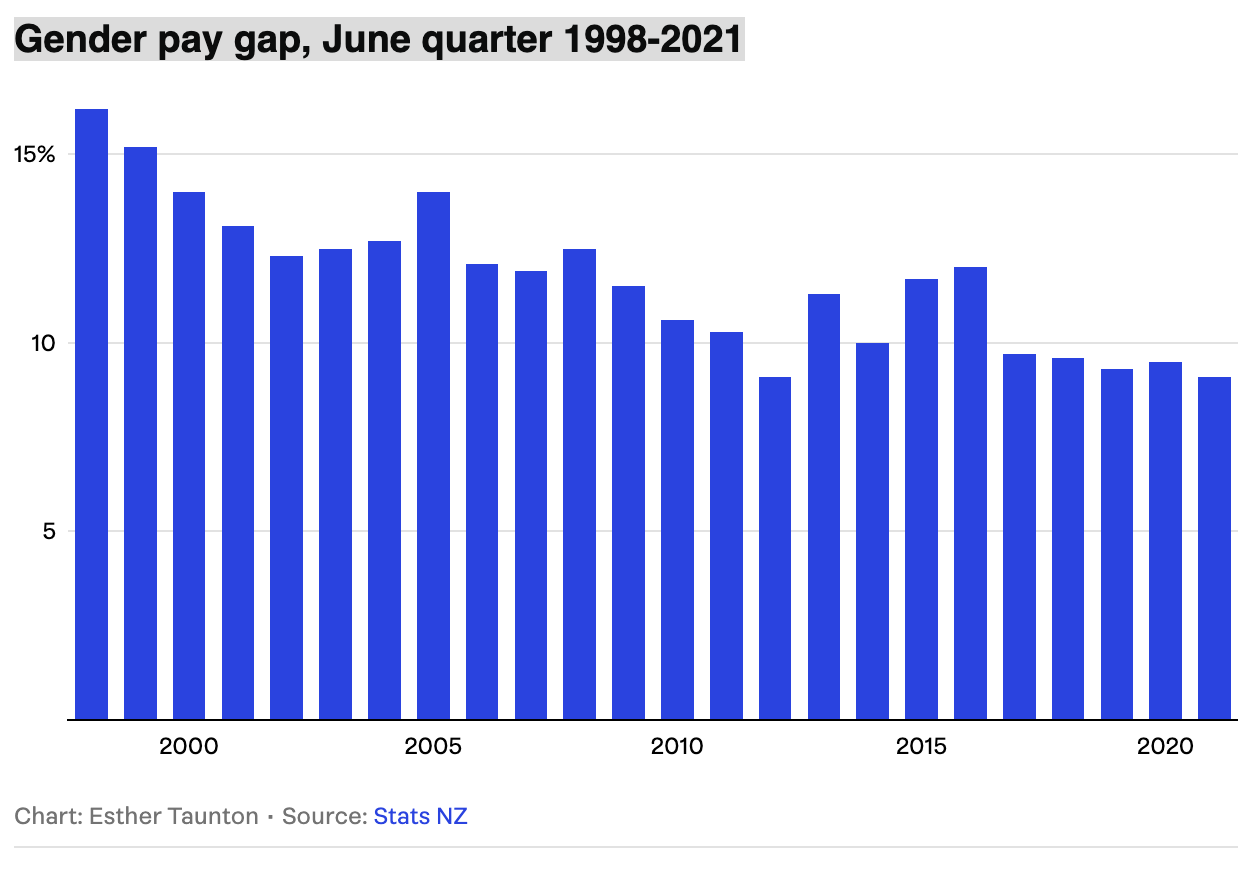There’s a statistical scandal in the gender pay gap
Here’s a male-female statistic for you. Each week men take home 42% more of the weekly earnings pool than women.
Kiwis earn $3.8 billion dollars a week via their wages and self-employment in 2022. Of this $2.23b is earned by men and $1.57b by women.
There are obvious reasons behind the severity of the 42% tilt. More men are in the workforce, so we’re not comparing one man with one woman. Plus, fewer men work part-time.
I’d still argue 42% is an interesting starting point, because it shows the gender imbalance in the economy. It’s the feeding station for societal issues like the pay-gap, pension-gap and financial power-gap.
While there’s a tidal wave of money into male hands each week, 42% is not the gender pay gap. Let’s be clear about that, before New Zealand’s chief statistician has a conniption.
The gender pay gap is reported at 9.2%. This is reached by comparing the median hourly rate of a man to a woman. It irons out the bias by using hourly, not weekly wages. The ‘median’ ranks us in order of high to low hourly rates and picks the person sitting bang in the middle of the queue.
The median man earns $30.85 per hour and the median woman earns $28 an hour (versus the average man earning $37 an hour and the average woman $33 an hour).
The acceptance of a calculation method
I could have presented the opening statistic in reverse. Men get 42% more than women, or women produce 29% less than men. It’s numerically the same. I’m simply changing the denominator of the equation.
Did I choose a bigger number to get a better headline? No. I simply presented it through the female lens.
I’m interested in what it would take for women to catch up to men. I don’t think any part of the audience (men included) is interested in the fall required to equalise earnings in the opposite direction.
The male lens
The gender pay-gap statistic of 9.2% has been well honed by our nerds in Wellington, but I still think it contains a major lie in the calculation. That sounds harsh, but hear me out.
Statistics New Zealand describe the maths as “The income of males minus the income of females, divided by the income of males”.
It’s the last six words I take umbrage with. This is known as the denominator of the equation. We are comparing the difference in earnings to the male income. It’s madness.
Men earn $2.85 an hour more than women. By dividing that by the male hourly rate of $30.85 we discover women earn 9.2% less than men. Eureka, what does that tell us? Absolutely nothing useful. Who is interested in the size of the wage cut required to achieve parity with women?
Divided by the income of females
Women want to know what size pay rise is required to achieve parity. We need to make the denominator our own hourly rate. So we take $2.85 and divide by $28. Our hourly rate needs to increase by 10.2% to level up.
Doesn’t it make far more sense to say the gender pay-gap is 10.2% not 9.2%? The female lens versus the male lens again.
The male denominator is scandalous in this situation. It downgrades the gender-pay gap and reports a useless number to the audience of both men and women.
To release the embedded lie, you take the official statistic of 9.2 and divide it by the result of 100 minus 9.2. Expecting every woman and every employer to recalculate the pay-gap is nothing short of cheeky.
Back in 1998 when New Zealand’s gap was 16% things were worse. The bigger the gap, the bigger the error with the equation. Women needed a 19% pay rise to achieve parity.
The presentation of statistics is important and should be designed to be useful for the audience. I’m sure those in charge of methodology will claim we need to adhere to an international standard to make the lie comparable.The male lens is hard to unwind once it’s entrenched.
In some ways, other statistics suffer the same issues. A 25% fall in the share market requires a 33% recovery to recuperate losses. If house prices fall 20%, it takes a 25% recovery to square up.
In the case of these stats, investors physically lost the amounts being reported. With the gender pay gap, women were never at the level of men, and the only statistic that matters is the climb to parity.
Janine Starks is the author of www.moneytips.nz and can be contacted at moneytips.nz@gmail.com. She is a financial commentator with expertise in banking, personal finance and funds management. Opinions are a personal view and general in nature. They are not a recommendation for any individual to buy or sell a financial product. Readers should always seek specific independent financial advice appropriate to their own circumstances.

